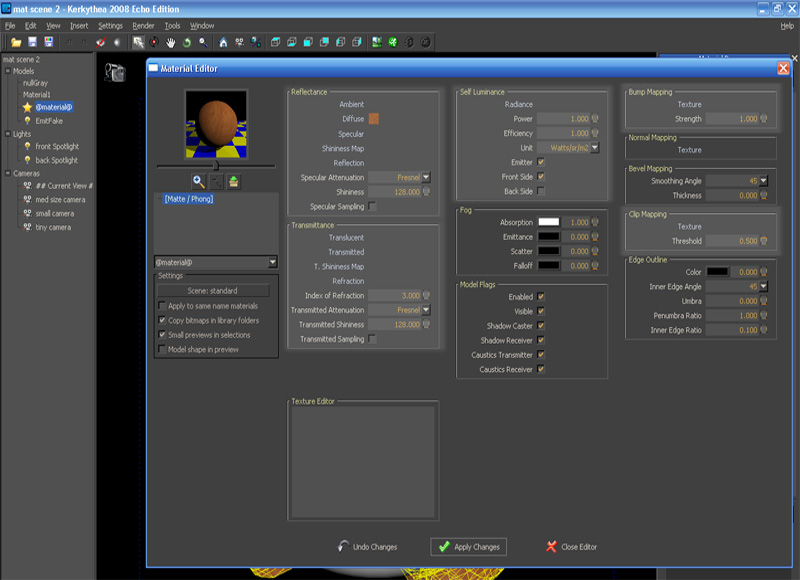Kerkythea Materials Pack

Kerkythea – take a deeper look at materials By Majid Yeganegi This is an extra little tutorial and an extension to Majid’s ‘‘. In this tutorial Majid goes further into the more advanced techniques in making materials, understanding their settings and then using them as a saved templates which can be edited later to suit your needs. A PDF of this tutorial is also available for download in our. The Kerkythea Forum can be found if you have any questions about the program. At this point hopefully, you will be more familiar with accurate material making and Kerkythea’s abilities.

Maybe it scares you at first but let me assure you that after a few attempts, you’ll find it easy to follow and even make your own templates. You can easily change them to fit your needs and also share them later in the Kerkythea forums for other users if you wish. “Ok let’s start from Fresnel Ramp Procedural, but first let’s try to understand “what the Fresnel Law states”. Basically it says that the reflection amount that you see while looking at a surface, depends on the ray angle that comes from that surface to your eye. If this ray is perpendicular to that face, then you will see less amount of reflection and when this ray has a tiny degree too the surface you will see the most reflection. Solaris Internals Core Kernel Components Pdf. You can easily experience this law: if you have a polished surface beside you (like a table etc.).
Thea Render Thea Render comes with high quality materials, resources exclusively for licensed users, integration with various modelers, a robust SDK and advanced.
Put your cup on it and now first take a look form nearly on top of the cup and then take a look from the sides, you’ll find that the cup’s image, reflected on the table differs. If you are walking beside a river you will see something like this below (this is rendered and not a real image). Settings and Its Effect When rays come from the far side of the river and have less angle with the surface, you will see more reflection (sky and environment). Rays that come from the near side and have more angle with the surface – almost perpendicular to it – you will see less reflection.
This is the Fresnel Law in practice. Asme B31.3 Edition 2010 there. Now we are going to use the “Fresnel Ramp” procedural to make realistic materials. “We are going to use the hidden power of Kerkythea and its layering system. Let’s start by making a new material from scratch”. Reset your material to a layered material. Step 9 “Your material is now ready and also a ‘true’ material. It may seem a bit daunting at first, but I promise you that after two or three attempts, you will be familiar with this process and it will become a lot easier”.
Now I am going to share with you one more tip, that will make your job easier. Industrial Biotechnology Ebook Pdf Gratuit. When you make an appropriate material you can save it as a template for later use.
Then you can easily change it to fit your needs. After making your material go to Settings>Materials.to open Material Editor. Right click on your materials and ‘Send to library’. Save them and give the library a name of your choice, so that later you can open and use them again. Step 10 On a final note if you are a Google SketchUp user, the renderer ‘‘, which is based on Kerkythea, will automate lots of your jobs.